
It’s sample time and I never knew what a challenge these would be in the time of COVID. Usually, I invite friends over and pop open a few bottles, and, if my husband is in a cooking mode, then I get to use my pairing skills. When the pandemic happened, the samples and tastings (not featured here) multiplied and for the first time. I had to change my policy of accepting samples and put restrictions on since doing this with just one other person, while safe, is not feasible right now.
That being said, 65 made the cut. Another 25 did not. I made some fun discoveries, affirmed my perceptions about others and learned a bunch in the process. In 2021, I am hoping I can make a dent in my sample closet and involve some dear friends again in the process.
Rosé
2018 Von Winning Pinot Noir Rosé – this rosé from the Pfalz region in western Germany is full of berries, watermelon, apples and peach is elegant and has mineral notes. As I continue to explore wines of Germany, the range of wines continue to surprise me.

2019 Goosecross A Rosé for Lucy — The 2019 Goosecross Rose for Lucy, named for the owners’ daughter, has notes of fresh strawberries, citrus, baked apple and is deliciously dry and complex.

2019 Clos Du Val Estate Pinot Noir Rosé had lovely notes of strawberries, rose petals and herbs. Elegance in every sip and definitely a rosé crafted to unveil itself as you sip.
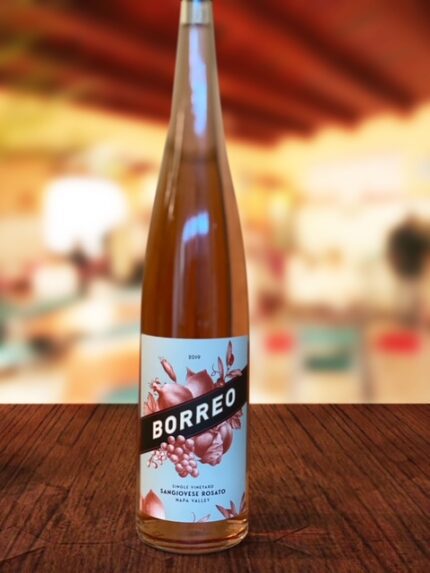
2019 Borreo Single Vineyard Sangiovese Rosato — This single vineyard rosé, is bottled in a magnum format from Silverado Vineyards. The wine, which originally came from the Soda Creek Ranch estate vineyard, but was renamed Borreo Ranch as a tribute to pioneer, Felix Borreo, who first planted grapevines in addition to fruit and olive orchards on this property in the late 1800s. And, it’s a great tribute. I tasted notes of roses, wild strawberries, watermelon, stone fruit and cherry.

2017 Tenuta di Fessina Etna Rosato — Named for Erse, “the call of the sunrise and the dew at dawn,” this mineral rosé was full of notes of herbs, raspberry, strawberry, pomegranate and spice.
NV Miss Anaïs Pays d’Oc IGP – this Grenache Gris is a great patio rosé with notes of raspberry, strawberry and some stone fruit notes. You can’t beat the average price around $11.
Sparkling

NV J Vineyards & Winery Cuveé 20 – this was a great bottle to pop open and celebrate over the holidays. I tasted baked apple, citrus, stone fruit, crème brûlée, almond and spice.
Champagne

NV Piper-Heidsieck.Brut Champagne — Piper-Heidsieck carefully selects fruit from more than 100 of Champagne’s crus to blend the Brut NV. This blend has notes of ginger, toast, apple and cherry.
Champagne Ayala
Champagne Ayala is one of the longest-established champagne Houses in existence for more than 150 years based in Aÿ by the Grand Crus of Montagne de Reims. It was acquired in 2005 by the Bollinger family and the winemaking facilities were restored. Ayala currently owns 35 acres in Champagne.
I tried one vintage year and two non-vintage blends showcasing the range of champagnes coming from this champagne house:

2013 Champagne Ayala Blanc de Blancs – this blend of 100 percent Chardonnay is 25 percent Cramant, 25 percent Cuis, 23 percent Chouilly, 14 percent Mesnil and 13 percent Vertus. This was gorgeous with notes of citrus, apple, flowers, almonds and fresh bread.
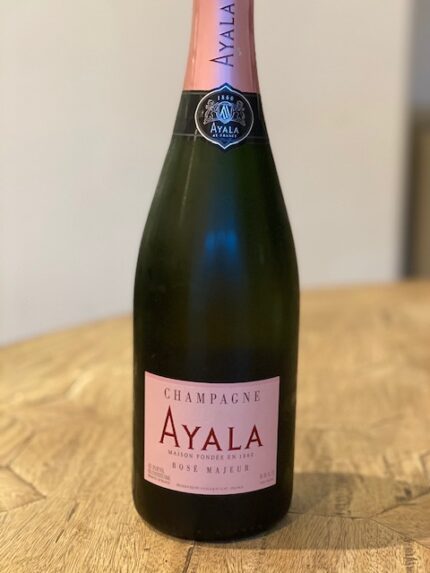
NV Champagne Ayala Rosé Majeur – this is a blend of Chardonnay (51 percent), Pinot Noir (40 percent) and Pinot Meunier (9 percent). You’ll taste notes of berry, herbs, spice, flowers and stone fruit.
NV Champagne Ayala Brut Majeur — this is a blend of Chardonnay (40 percent), Pinot Noir (40 percent) and Pinot Meunier (20 percent). I tasted notes of citrus, apple, lemon curd, white flowers, honeysuckle, pepper and brioche. It’s an elegant, balanced and fruity champagne.
White

2018 Goosecross Sauvignon Blanc This is a full-bodied wine with notes of grapefruit, lime, orange and tropical fruit and a nice minerality.
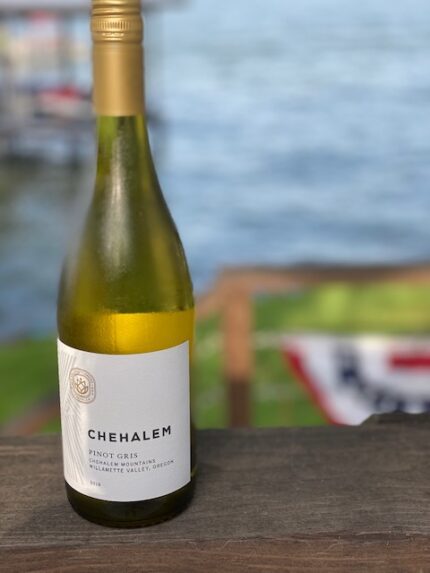
2019 Chehalem Pinot Gris – this was a delicate wine with notes of pear, green apple, citrus, herbs and melon. I found myself craving raw oysters.

2019 Girasole Vineyard Pinot Blanc – The 300-acre vineyard was planted in 1955 near the Russian River Valley by Charlie Barra. The family first grew grapes and he was one of the first growers on the North Coast to plant Chardonnay, Riesling, Cabernet Sauvignon, and Pinot Noir later adding Petite Sirah, Sangiovese, Merlot, Pinot Blanc, Muscat Canelli and Zinfandel. The Girasole Winery was launched in 2000. This 100 percent Pinot Blanc was crisp and refreshing. I tasted notes of lemon curd, stone fruit, honeysuckle and citrus with great minerality.

2017 Dautel Estate Weissburgunder Trocken – I fell in love with this Pinot Blanc because it was such an unexpected surprise. It was mineral and floral with notes of citrus and herbs.

2015 Schloss Johannisberg Riesling – this off-dry wine was a perfect match with our Indian food pairing. There were notes of citrus, spice, honeycomb, lemongrass and a great minerality.

NV Pasqua Hey French Bianco Veneto — other than a brilliant name, this wine comes from four of the best vintages of the last decade – specifically 2013, 2015, 2016 and 2017, from vineyards across the Veronese side of Mount Calvarina in Soave. For a non-vintage wine, you saw the aging potential as you sipped. I tasted white flowers, hazelnut, citrus and tropical fruit.

2017 Esporã0 Reserva — This vintage is a blend of Arinto, Antão Vaz and Roupeiro grapes made from 18-year-old estate vines. I tasted notes of pear, grapefruit, citrus, herbs and apricot with a great minerality.

2017 Mi Sueno Chardonnay — I’ve seen this wine described as luxurious and I agree this Burgundian-style wine is something that you want to savor. I tasted notes of pineapple, lemon curd, apple, stone fruit, baked apricot and cedar.
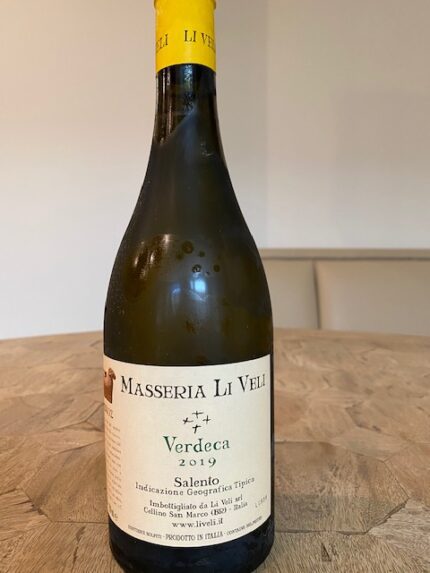
2019 Masseria Li Veli Askos Verdeca – this was a fun discovery with notes of apple, pear, flowers, tropical fruit, honey and jasmine.

2017 Jordan Winery Chardonnay — This Burgundian-style white is bursting with stone fruit, apple, flowers, citrus and honeysuckle. Always a classic and hated to miss the annual epic Halloween party this year.
I’m not sure if this was intentional or if a sample got stuck in my inventory, but I had the chance to try these Chalk Hill wines from different places side-by-side.
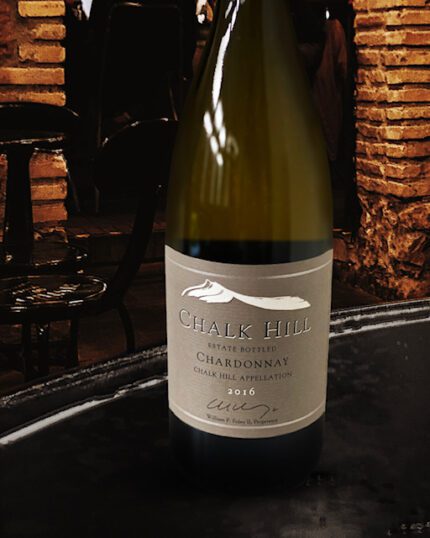
2016 Chalk Hill Estate Chardonnay – Chalk Hill is a Sonoma standby winery with notes of baked apple, melon, citrus, tropical fruit, stone fruit and hazelnut with mineral notes.
Dark gold in color, the wine’s flavors delve into rich, honeyed tones of baked apple, fig and mango, the use of oak substantial in style. There’s a clean, short finish after plenty of full-bodied concentration and ripeness.

2017 Chalk Hill Chardonnay – such an interesting change with this vintage. I tasted lemon, honey, almond, apple, stone fruit and toffee. This was definitely a much more savory wine than the 2016.

2018 Clos Du Val Estate Chardonnay — this elegant Chardonnay was structured and elegant with notes of white flowers, lemon, toast, vanilla and herbs.

2019 Jean d’Alibert Alyssa Pays d’Oc White — this blend of grenache blanc and viognier was an easy drinking, value-oriented white wine. I tasted notes of tropical fruit and white flowers with a bit of a sweet note.

2017 Frank Family Vineyards Chardonnay — this wine is always a classic and never disappoints. I tasted baked apple, pear, vanilla, brioche and melon.
Reds

2018 Masseria Li Veli Passamante — this was full of red cherry, cinnamon, spice and herbal notes. Spicy and savory, this wine was balanced with a nice acidity.

2o16 Famiglia Olivini “Notte a San Martino — this Merlot blend had notes of coffee, blackberry, raspberry and was great. I had the chance to cover the whites in a prior column and the red should not be overlooked.

2012 Tenuta Di Fessina Etna Rosso Riserva Il Musmeci — this wine had dark cherry, spice, blood orange, mocha and spice. Very enjoyable.

2017 Clos du Val Estate Pinot Noir – gorgeous wine with notes of Asian spice, earth, cherry cola, nutmeg and cinnamon.

2017 Utopia Pinot Noir Ribbon Ridge— founded 20 year ago by the Warnshuis family, Utopia is defined as “the perfect place, and no place.” The wine was delicious with notes of black and red cherry, strawberry, roses, herb and a touch of spice.
Ron Rubin Winery
Ron Rubin, an industry beverage veteran, dreamed of starting his own winery when he was studying viticulture and enology at UC Davis in 1971. His path led to the family business in the beverage industry. Forty years later, he purchased River Road Family Vineyards and Winery in the Russian River Valley. He later formed two brands – the River Road Vineyards and Ron Rubin wines.

2017 River Road Stephanie’s Cuveé Pinot Noir — this was a smooth Pinot with notes of blue and red fruit, vanilla and earth.

2017 Ron Rubin Pinot Noir – I still can’t believe this was a $25 wine. Tons of red fruit, spice, vanilla and fennel. Bright cherry, cranberry, and raspberry aromas with hints of dill, fennel, and spice.

2015 St Supery Rutherford Merlot – In May, I had the chance to join CEO Emma Swain for a tasting for the winery and the vineyards and received a few wines to taste afterward. St Supery wines never fail to impress. This Merlot has notes of plum, blueberry, dark chocolate, pencil lead and mocha.

2016 St Supery Napa Valley Estate Cabernet Sauvignon– is a great expression of 85% Cabernet Sauvignon, 6% Petit Verdot, 3% Malbec, 3% Cabernet Franc and 3% Merlot. I tasted notes of black fruit, blueberry, plum, earth, violet, olive tapenade and licorice.

2017 Lion Tamer Cabernet Sauvignon (Lions Head Collection) — this was a blend of 81 percent Cabernet Sauvignon, 11 percent Petite Sirah and 8 percent Malbec. “Lion Tamer” label is a nickname for the Malbec used in the blend due to its ability to tame tannins like a lion tamer soothes the powerful animal. I tasted plum, cassis, currant, blackberry, eucalyptus and spice.

2016 Silverado Vineyards Solo Cabernet Sauvignon — this is a special wine with a special clone originally planted in 1968 by Harry See when he planted the Silverado Vineyard to Cabernet Sauvignon. Over the next two decades this clone emerged, becoming the only Stags Leap District Cabernet Sauvignon “Heritage Clone”, designated by the University of California, Davis. The SOLO wine is a tribute to this clone. I tasted red and black fruit, chocolate, earth and herbs. While beautiful today, this wine will benefit from the gift of time.

2018 Girasole Vineyards Cabernet Sauvignon — notes of black cherry, black currant, olive tapenade, spice, toffee and a touch of oak. This value wine delivers for the price tag at under $15.

2017 Raymond Vineyards Cabernet Sauvignon – this 90% Cabernet Sauvignon, 7% Petit Verdot, 2% Petite Sirah and 1% Merlot was a great Cabernet at an under $30 price point. I tasted cherry, orange peel, mocha, graphite and spice.

2017 Mullan Road Cellars Cabernet Sauvignon — In 2012, Dennis Cakebread of Cakebread Winery fame started a Washington wine project to make a singular Washington State Cabernet Sauvignon-based red wine. Mullan Road is named after the first wagon road into the Pacific Northwest over the Continental Divide. This single-variety Cabernet Sauvignon has notes of raspberry, strawberry, Asian spice, black tea, coffee and chocolate.

2018 Victory Day 1945 Red Wine — To commemorate the 75th anniversary of the end of World War II on May 8, 1945, the Boisset Collection has released a new wine and is donating a portion of the proceeds to support veterans’ causes. This wine is a celebration of when the free world joined together to celebrate peace. It is blended in both American and French oak and is a blend of Cabernet Sauvignon, Petite Sirah, Syrah, Grenache, Petit Verdot and Merlot made by Winemaker Brian Maloney. It had notes of blackberry, Asian spice, chocolate and mocha.
Multiple Bottles and/or Notable Stories

Chemistry Wines –Launched in 2018, Chemistry is the first collaborative project between Stoller Family Estate and Chehalem Winery. I tried three wines sourced from various Willamette Valley sites. These are positioned to be “life’s everyday wines.”
2019 Chemistry Willamette Valley Pinot Gris Willamette Valley – this Pinot Gris was a great expression of what Oregon Pinot Gris should be. I tasted tropical fruit, stone fruit, apple and white pepper.
NV Chemistry Pinot Noir Rosé Bubbles – this is a fun and easy drinking sparkling made of pinot noir grapes with notes of strawberry, rose petals, watermelon, peaches and cherry.
2018 Chemistry Pinot Noir Willamette Valley – this was a light Pinot Noir with notes of cranberry, earth, Asian spice, cherry and raspberry.

Siduri Winery Siduri specializes in cool-climate Pinot Noir from five major AVAs on the West Coast, spanning from the Willamette Valley in Oregon, down to Santa Rita Hills in California’s Santa Barbara County.
2018 Siduri Santa Barbara County Pinot Noir – this was an elegant and savory wine with notes of cherry, violets, plum, mushroom and herbs with a touch of spice.
2018 Siduri Russian River Valley Pinot Noir – such an easy drinking wine with notes of berry, red cherry, rose petal, mushroom, nutmeg and a touch of cedar.
2018 Siduri Willamette Valley Pinot Noir – a strong representation of the Willamette Valley, this wine has notes of cranberry, spice, orange peel, berries, earth, cherry and herbs.
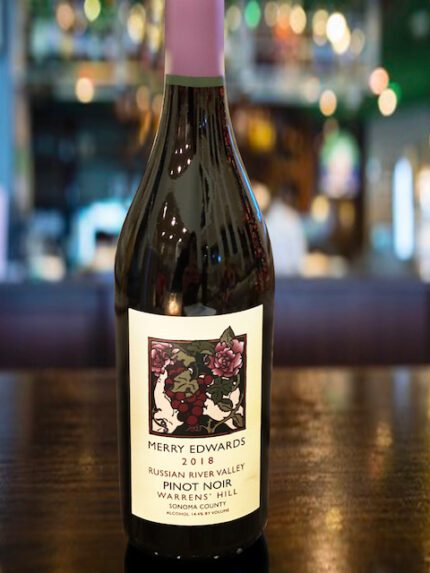


Merry Edwards Winery & Vineyards.com I have always loved the wines and conversations with Merry, former proprietor of Merry Edwards Winery & Vineyards. Tasting these single vineyard and signature wines side-by-side was an opportunity to experience the diversity and craftsmanship shown by this winery.
2018 Merry Edwards Sonoma Coast Pinot Noir – lots of strawberry, dark cherry, herbs, flowers, spice and rose petals make this a juicy wine that will keep you sipping.
2018 Merry Edwards Olivet Lane Pinot Noir – I describe this as velvet in a glass. I tasted Asian spice, earth, berry, rose petal, cherry, mocha and a nice earthiness.
2018 Merry Edwards Klopp Ranch Pinot Noir – this was an aromatic wine with notes of berries, cherries, lavender, herbs, tea, cola and spice.
2018 Merry Edwards Flax Pinot Noir – this was very interesting in the glass. I tasted pomegranate, cranberry, citrus, earth and spice.
2018 Merry Edwards Bucher Pinot Noir — Since the acquisition, this is Pinot was made in 2016 under the guidance of Heidi von der Mehden, now the winemaker. I tasted cranberry, dried flowers, blackberry, earth and spice.

Notre Vue Estate – The two wines I received are new starts after the fires in Sonoma. In May, the fire damaged the tasting room and warehouse. Then the Kincade fire, which started October 23, destroyed an outbuilding, furniture and brush on the property.
It is a 710-acre vineyard with 250 planted in the Russian River Valley. And they are both special wines and the soils samples they sent to show terroir was super interesting.
2019 Notre Vue Chardonnay Musque – The Notre Vue Chardonnay is made from the Chardonnay Musqué clone with notes of lemon, stone fruit, pear, apple and white flowers. This wine was a treat.
2019 Notre Vue GSM Rosé – this Grenache, Syrah and Mourvedre blend is full of notes of raspberries, blackberries, earth, rose petals and citrus.

Troon Vineyard — based on Oregon’s Applegrate Valley, prides itself on estate wines inspired by the wines of the Mediterranean coast of France and are Demeter Biodynamic® and Organic Certified. I had a chance to talk with Denise and Bryan White, the owners of the winery in December of 2019 and I’ve watched the evolution under my friend Craig Camp as general manager. Their wines continue to inspire my learning of the wine and evolve with quality each year. I love seeing Craig’s vision for what the wines of Applegate Valley, a lesser known wine area in Oregon can do.
2017 Troon Vineyard Riesling – this is another representation of “orange wine,” but not one of the sake of being an orange wine. It has flavor and depth with notes of apricot, citrus, almonds, flowers and honeysuckle.
2019 Troon Vineyard Kubli Bench Amber – this is a blend of 74 percent Riesling, 16 percent Vermentino and 10 percent Viognier and this is defined as an “orange wine.” No matter how it’s categorized, this is just a good wine. I tasted citrus, ripe plum, herbs and a touch of vanilla.
2019 Troon Vineyard Kubli Bench Rosé – this rosé was a blend of 60 percent Tinta Roriz, 35 percent Primitivo and 5 percent Grenache and really had a “pow factor.” I tasted currant, orange, berry, herbs and pepper.
2018 Troon Vineyard Côtes du Kubli – the Rhone blend of 51 percent Viognier, 28 percent Marsanne and 21 percent Roussanne is the first release of this white blend, made in partnership with fellow biodynamic farmers and winemakers, Barbara and Bill Steele of Cowhorn Vineyard.
Persimmon, tangelo and pear nectar, this wine’s vibrantly lifting acidity melds smartly with its lightly orange-pithy finish. There is excellent complexity here in flavors and palate dynamism, even though the finish is rather modest. This has an excellent, pristine clean profile.
2018 Estate Syrah, Whole Cluster Fermentation, White Family Selection, Kubli Bench, Applegate Valley – this was a great expression of a Syrah with black fruit, tea, cigar, herbs, leather and cocoa.
2018 Estate Syrah, Kubli Bench, Applegate Valley – this savory Syrah had notes of black fruit, Asian spice, black tea, spice and earth. Definitely tasted a touch of oak in this one vs the other.

Blackbird Vineyards — Usually I have an epiphany moment during each sample process where I think “how have I not known about a vineyard prior?” This was definitely the moment.
Purchased by Michael Polenske in 2003, Blackbird Vineyards was once a walnut orchard with 5,717 Merlot vines in 1997. Blackbird became a grower and became sought after vineyard by some of the top names including Dalle Valle. Blackbird started making wine in 2003 with a small crush not claimed by its clients and received great critic reviews. The winery is terroir-driven with a focus on Merlot, Cabernet Franc, and Cabernet Sauvignon with a focus on making wines in the Right Bank region of Bordeaux with well-known Consulting Winemaker Aaron Pott.
2019 Blackbird Vineyards Dissonance – you can see the French influence of Aaron’s background with this wine. I tasted pear, pineapple, crisp apple, white flowers, grapefruit, nutmeg and herbs. It’s 87 percent Sauvignon Blanc and 13 percent Semillon.
2016 Blackbird Vineyards Arise Proprietary Red – this everyday drinking red had notes of cherry, plum, blueberry, chocolate, spice, herbs and black fruit. The 2016 Arise Proprietary Red is a blend of 55% Merlot, 25% Cabernet Franc, 17% Cabernet Sauvignon and 3% Petit Verdot.
2016 Blackbird Vineyards Paramour – this is a stand up and take notice wine with Cabernet Franc, one of my favorite grapes. It’s a blend of 82% Cabernet Franc, 15% Merlot and 3% Cabernet Sauvignon with currant, herbs, black fruit, black tea, earth and spice.
2016 Blackbird Vineyards Contrarian – this blend of 64% Cabernet Sauvignon, 29% Cabernet Franc and Merlot. It has notes of blue and black fruit, tea, purple flowers, pencil lead, licorice, cherry and toffee. Wow!

Sensi Wines
I had a chance to taste and talk with Massimo Sensi, of Sensi Wines, a fourth-generation wine producer who comes from a family, earlier this year . We didn’t taste the wide variety of wines that he sent, so I’m still catching up. Thier wines come from two farms in Tuscany: Tenuta del Poggio and Fattoria di Calappiano where they have 100 hectares of vineyards and olive groves.
2017 Sensitive’s Sabbiato Bolgheri — bursting with plum, blackberry, tobacco, leather, earth and a touch of vanilla.
2016 Collegonzi Toscana Sangiovese Fatteria di Calappiano – this 100 percent Sangiovese wine had notes of black cherry, black pepper, earthy with a touch of spice. Great value for the money.
2016 Lungarno Toscana Fattoria de Calappiano — this blend of Sangiovese and Colorino is easy drinking with notes of black fruit, herbs, earth, licorice and spice.





